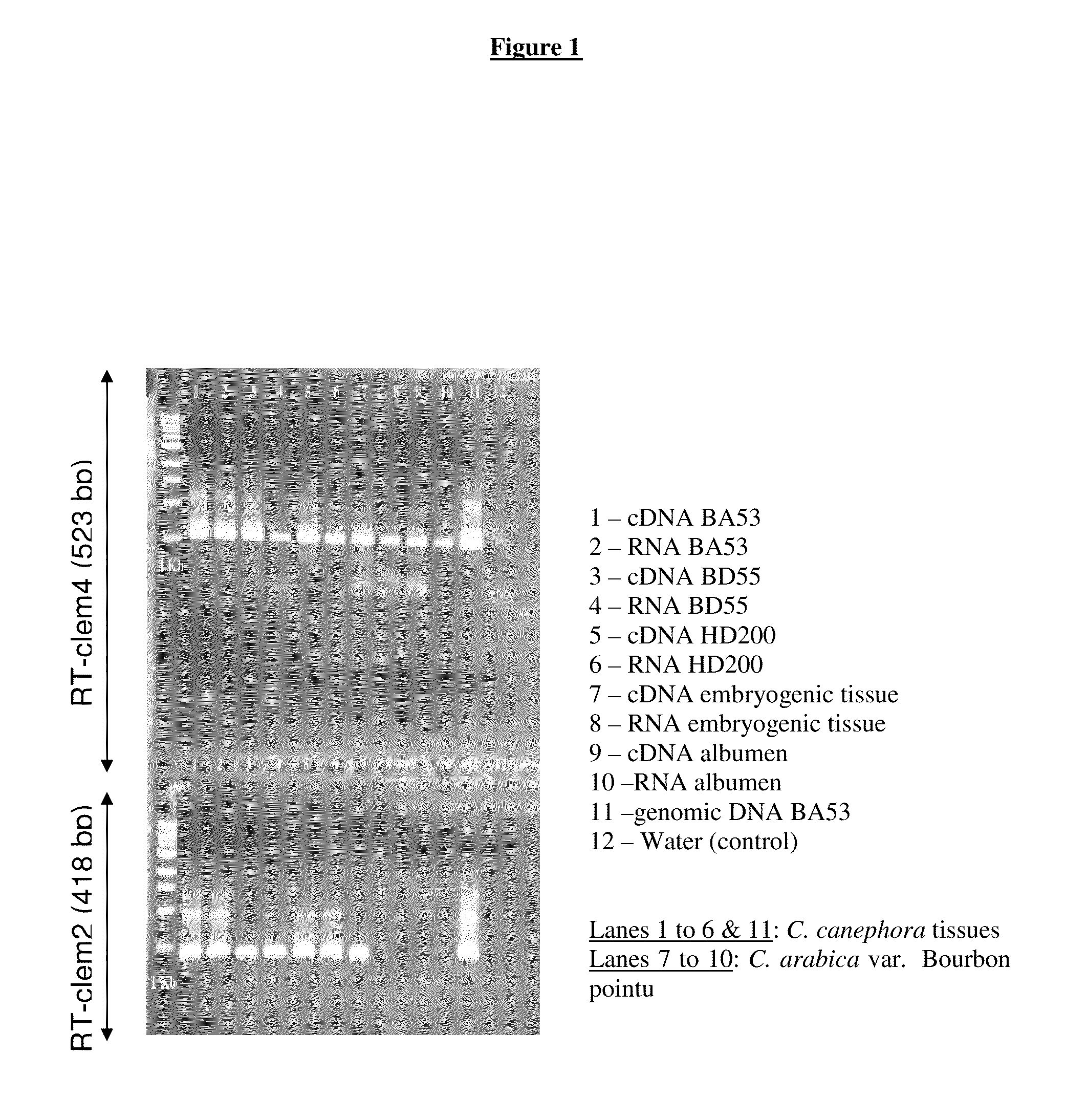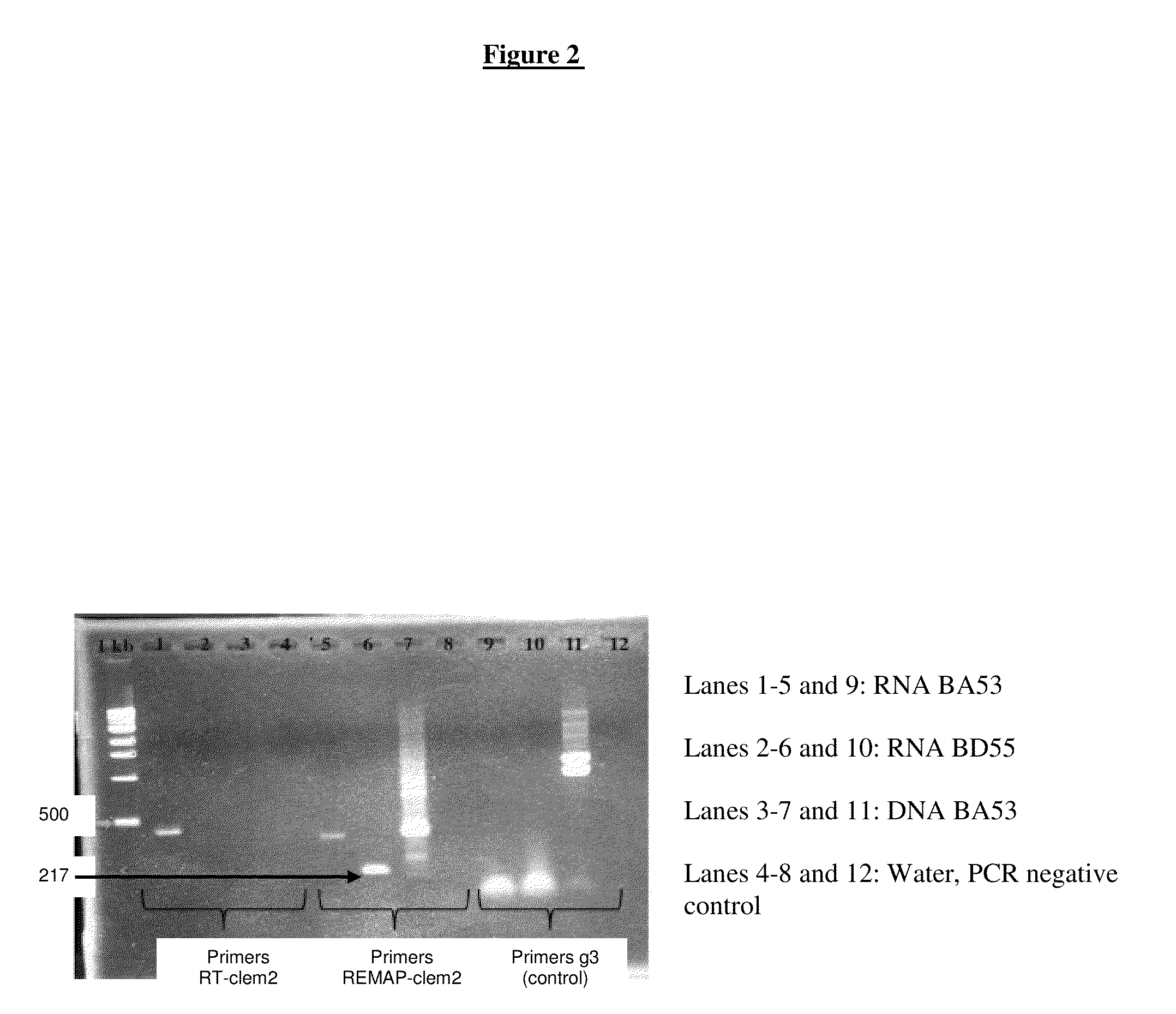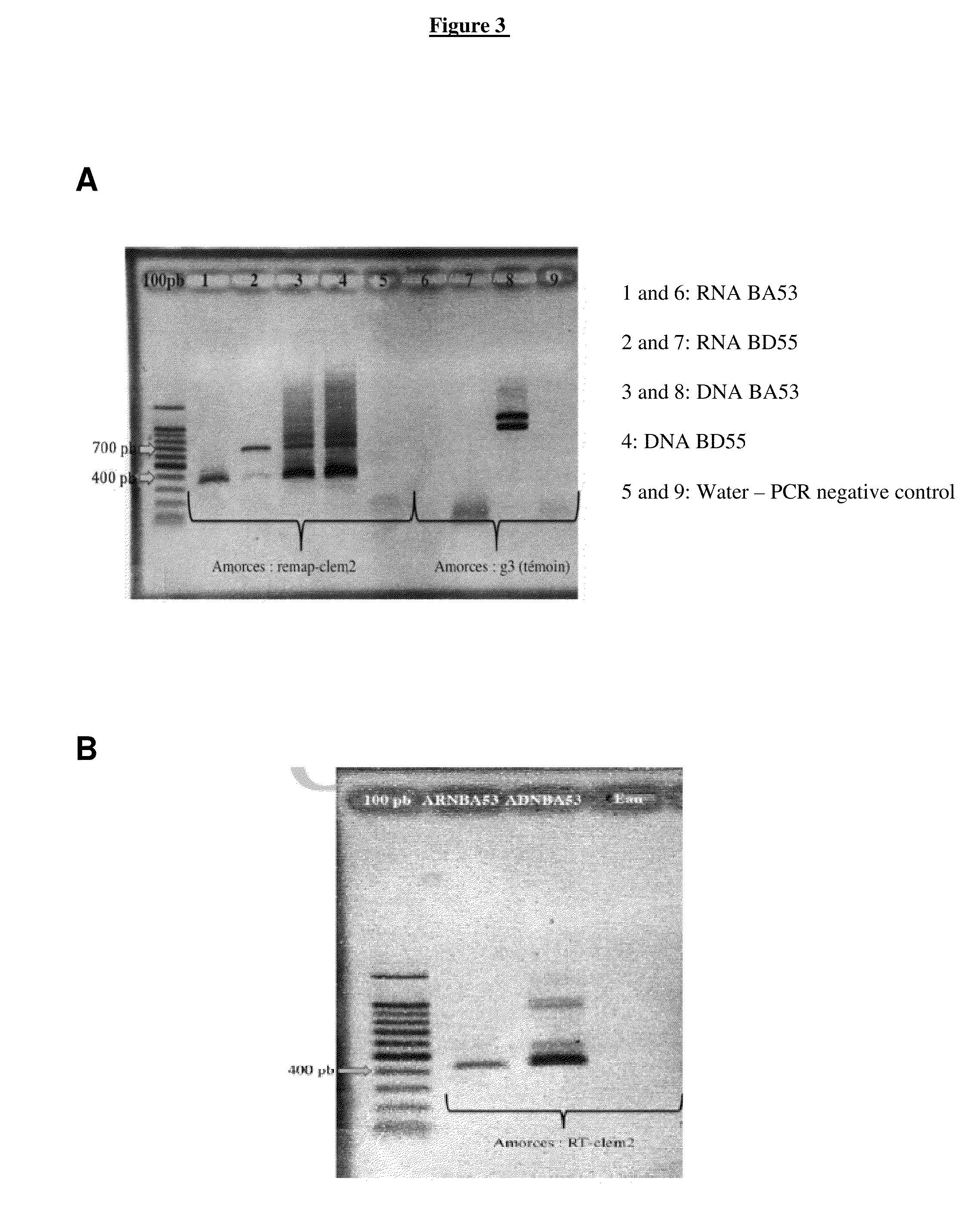Clem2, active retrotransposon of coffee plants
a retrotransposon and active technology, applied in the field of identification of varietal and/or clonal species of the coffea genus, can solve the problems of defective and inactive three retrotransposons, and achieve the effect of effective molecular marker for determining and abundance and transcriptional activity
- Summary
- Abstract
- Description
- Claims
- Application Information
AI Technical Summary
Benefits of technology
Problems solved by technology
Method used
Image
Examples
example 1
Identification of LTR Retrotransposons in the Coffee Plant
[0108]Using the C. canephora genomic resources that they had at their disposal, the inventors assembled highly repeated sequences (Assisted Automated Assembler of Repeat Families algorithm, AARF) and identified long sequences characteristic of the transposable elements of LTR retrotransposon (RTN) type. Using the assembled sequences (contigs), 29 different RTNs were identified, including 18 of Ty3-gypsy type, 10 of Ty1-copia type and 1 not characterized. Two, among these 29 RTNs, (Divo and Nana) had already been identified and described by the inventors (Hamon et al., Mol. Genet. Genomics, June 2011, 285: 447-460).
[0109]The 11 additional complete RTNs identified (i.e. Clem1.1, Clem4, Rom1, Clem2, Clem3.2, Clem5, Clem6, Clem11, Rom6, Rom10 and Rom13) have a size ranging from 13458 by for the largest (Clem2, Ty3-gypsy) to 4822 by for the smallest (Clem3.2, Ty1-copia). The LTRs of these RTNs also exhibit a great size variation r...
example 2
Activity of the LTR Retrotransposons in Various Coffea Tissues
[0110]One of the objectives of this study was to estimate the expression of the LTR-RTNs reassembled in various tissues of C. canephora. Primers were designed for 21 RTNs in noncoding regions, the LTRs, but also in coding regions, the GAG (Group-specific Antigen), RT (Reverse Transcriptase), RH (RNase H) and IN (Integrase) protein domains. The primers were tested via PCR amplifications on the genomic DNA of the BA53-type individual of C. canephora originating from West Africa, Guineans genetic diversity group (Gomez et al., BMC Evol. Biol., 2009, 9: 167). The expression of the LTR-RTNs was then investigated by PCR amplification using, as template, cDNA libraries of leaves or of fruits of C. canephora coffee plants at various stages in maturation (Mahesh et al., Plant Cell Rep., 2006, 25: 986-992).
[0111]In order to complete these results, the expression of certain LTR-RTNs was analyzed by RT-PCR on other organs and tissues...
example 3
Confirmation of Circular Replicative Forms of the Clem2 RTN
[0118]In order to confirm the presence of circular replicative forms for the Clem2 RTN, two primers (REMAP-clem2-5′ and REMAP-clem2-3′) were designed at the ends of the LTR regions of Clem2 and oriented towards the exterior of the RTN, and PCR amplifications were carried out on the genomic DNA and the total RNAs in C. canephora. The results showed amplifications on the total RNAs, of two different sizes (approximately 200 by and 400 bp), suggesting the presence of circular forms of DNA of the Clem2 LTR-RTN in the samples. FIG. 3(A) indeed confirms the presence of these bands after amplification with the remap-type pairs of primers on the BA53 and BD55 genotypes, and also after amplification on the RNAs of the BA53 genotype with the RT-clem2 pair of primers (FIG. 3(B)). The PCR amplification product for the REMAP-clem2 primers was purified and sequenced. Analysis of the sequence obtained for the 400 by band with remap-clem2 o...
PUM
| Property | Measurement | Unit |
|---|---|---|
| volume | aaaaa | aaaaa |
| volume | aaaaa | aaaaa |
| altitude | aaaaa | aaaaa |
Abstract
Description
Claims
Application Information
 Login to View More
Login to View More - R&D
- Intellectual Property
- Life Sciences
- Materials
- Tech Scout
- Unparalleled Data Quality
- Higher Quality Content
- 60% Fewer Hallucinations
Browse by: Latest US Patents, China's latest patents, Technical Efficacy Thesaurus, Application Domain, Technology Topic, Popular Technical Reports.
© 2025 PatSnap. All rights reserved.Legal|Privacy policy|Modern Slavery Act Transparency Statement|Sitemap|About US| Contact US: help@patsnap.com



